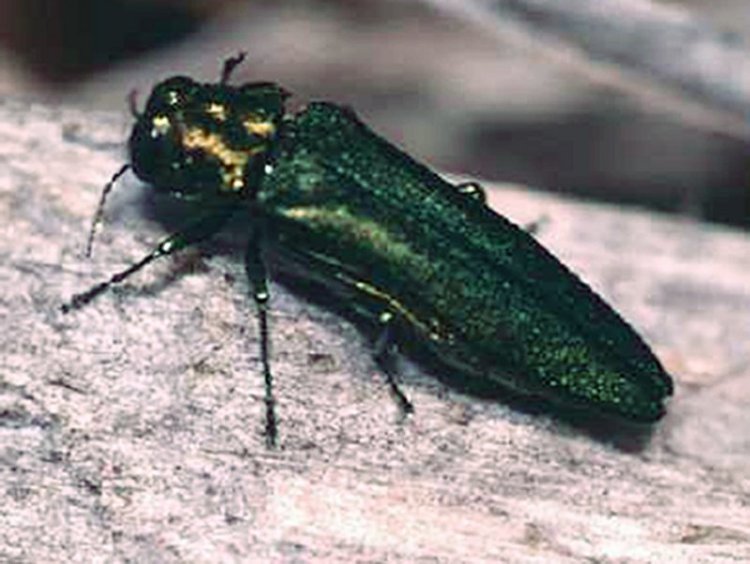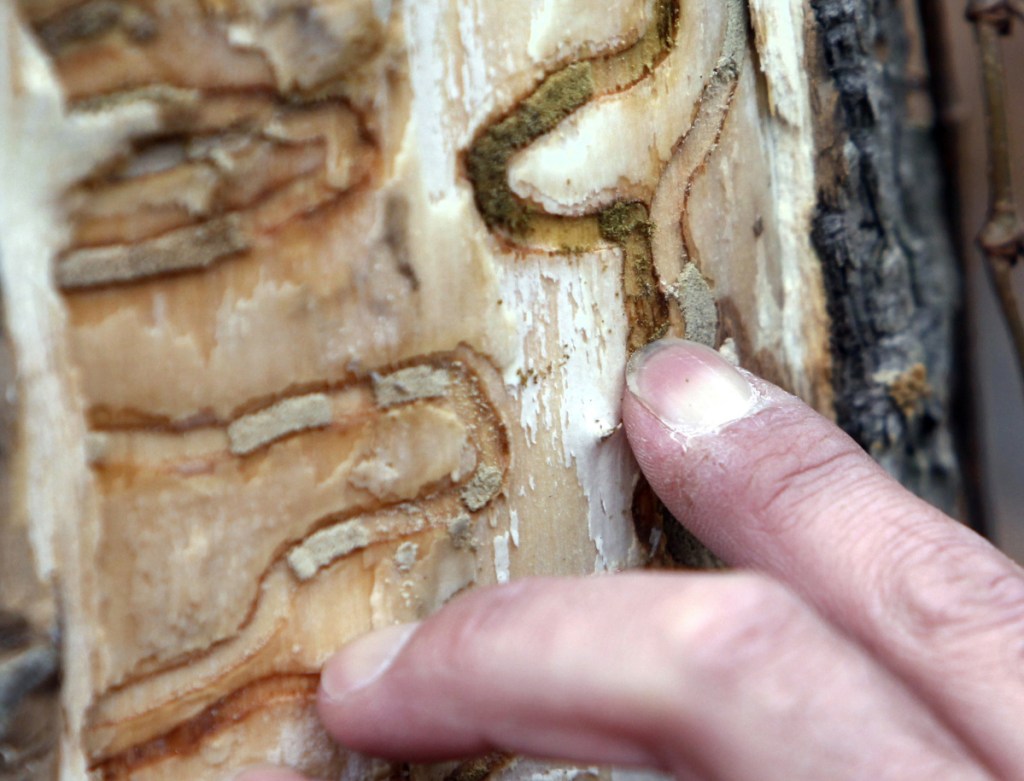LEBANON — Maine officials say the live larvae of a destructive, invasive forest pest have been found in York County trees for the first time.
The Maine Forest Service says emerald ash borer larvae were found in trees in late February. Officials say the borers appear to be established within 3 miles of the New Hampshire border for at least 17 miles between Acton and Berwick.
The forest service, with support of landowners and assistance from Central Maine Power and Lucas Tree Experts, collected branches from ash trees along roads in Acton, Lebanon and Berwick. Forest service staff peeled the bark off the branches to look for signs of emerald ash borer.
Live emerald ash borer larvae were found on two of the trees sampled, one each from the towns of Acton and Berwick. Although these trees still appear healthy, they are infested with the invasive pest.
Last year, adult borers were found in traps in western York County. The borer also was discovered in far northern Maine in spring 2018.
A native of Asia, emerald ash borers have killed millions of trees in the U.S. and Canada since being discovered in 2002 and are regarded as one of the most destructive forest pests in North America. The borer destroys ornamental and forest ash trees. It was found in Michigan in 2002 and has been found in 35 states and four Canadian provinces.
The small, metallic-looking beetles lay eggs on ash trees and the hatching larvae then tunnel under the trees’ bark, causing extensive damage that typically results in tree death within three to five years. Although there are methods to control the spread of the emerald ash borer, experts have yet to devise a way to eliminate the pests once they are established.
Although accounting for just 4 percent of Maine’s hardwood forest resources, ash trees fill an important cultural and economic niche in Maine.
Ash is used to make baseball bats, snowshoes, furniture, canoe paddles and other products in Maine, and the state’s ash forests have an estimated overall commercial value of $320 million. Maine’s Indian tribes also have used ash for untold generations to weave baskets, for the thwarts and gunwales of birch-bark canoes and in other tribal crafts.
To get a clearer picture of where the pest is established in York County, the forest service plans to work with landowners to girdle ash trees this spring, concentrating on towns near the New Hampshire border.
These girdled trees will act as traps, drawing in emerald ash borers from the immediate area. The trees will be felled and peeled in the fall to look for signs of the pest.
With this information on establishment and population density, the forest service will be able to move forward with a plan for managing the emerald ash borer.
In 2018, the Maine Department of Agriculture, Conservation and Forestry used a quarantine to contain the emerald ash borer and prevent the pest’s movement in firewood, ash logs, ash wood products and other products from York and northern Aroostook counties.
The state says the quarantine is needed to protect forests in the state, as well as landscape tree resources.
In imposing the quarantine for northern Aroostook and York counties, officials said it is probable that all of York County eventually will be included in future state and federal quarantines. The order issued Sept. 12 restricted the movement of some ash products and firewood in four towns: Acton, Berwick, Lebanon and Shapleigh.
If you have ash on your property and are interested in participating in this survey, contact colleen.teerling@maine.gov for more information.
Send questions/comments to the editors.




Comments are no longer available on this story